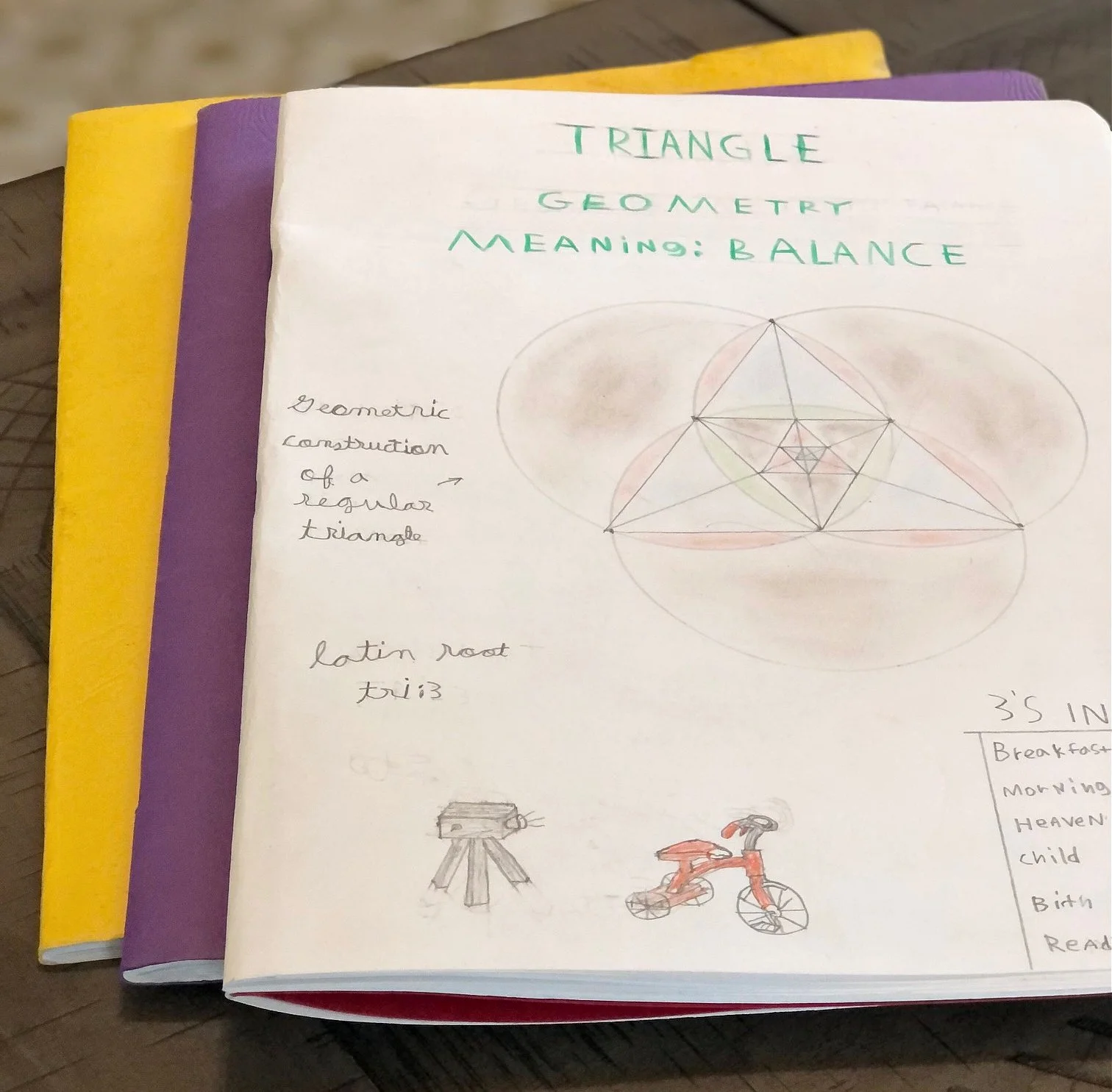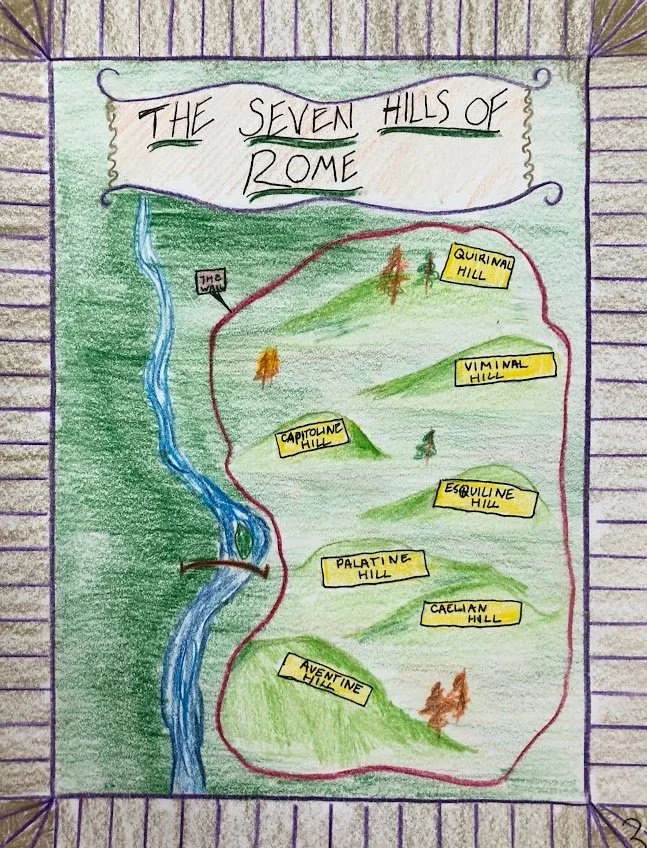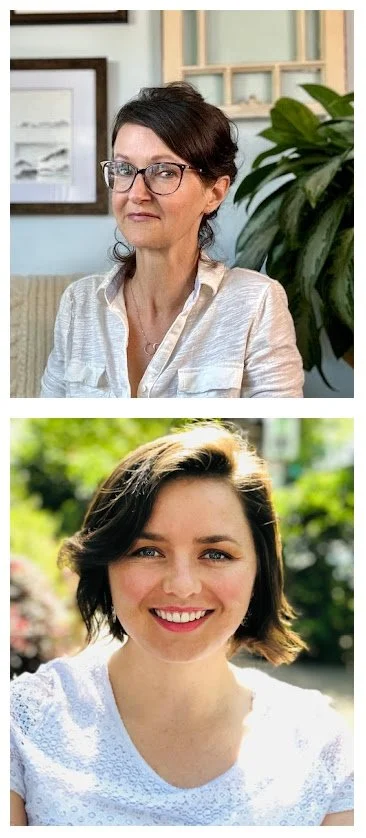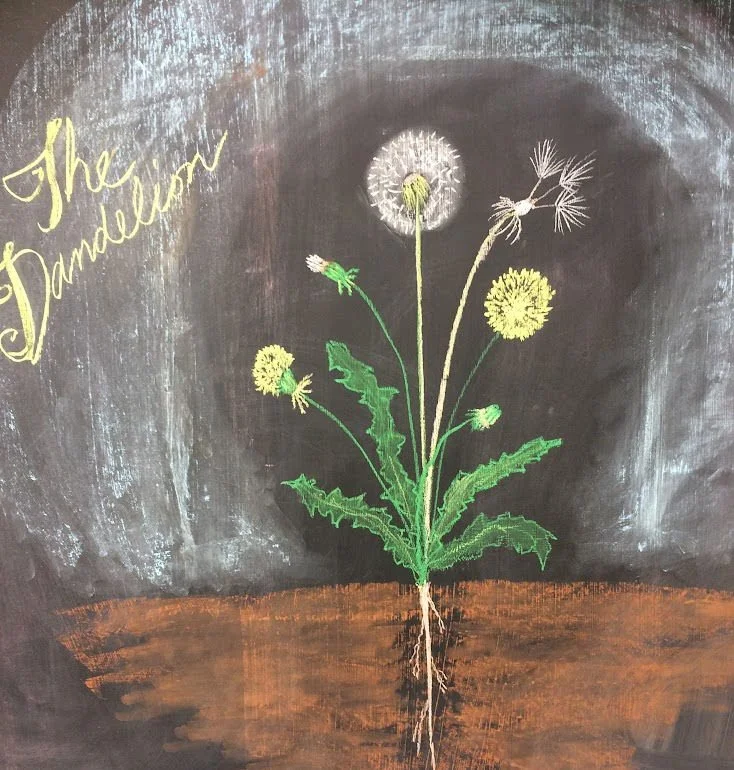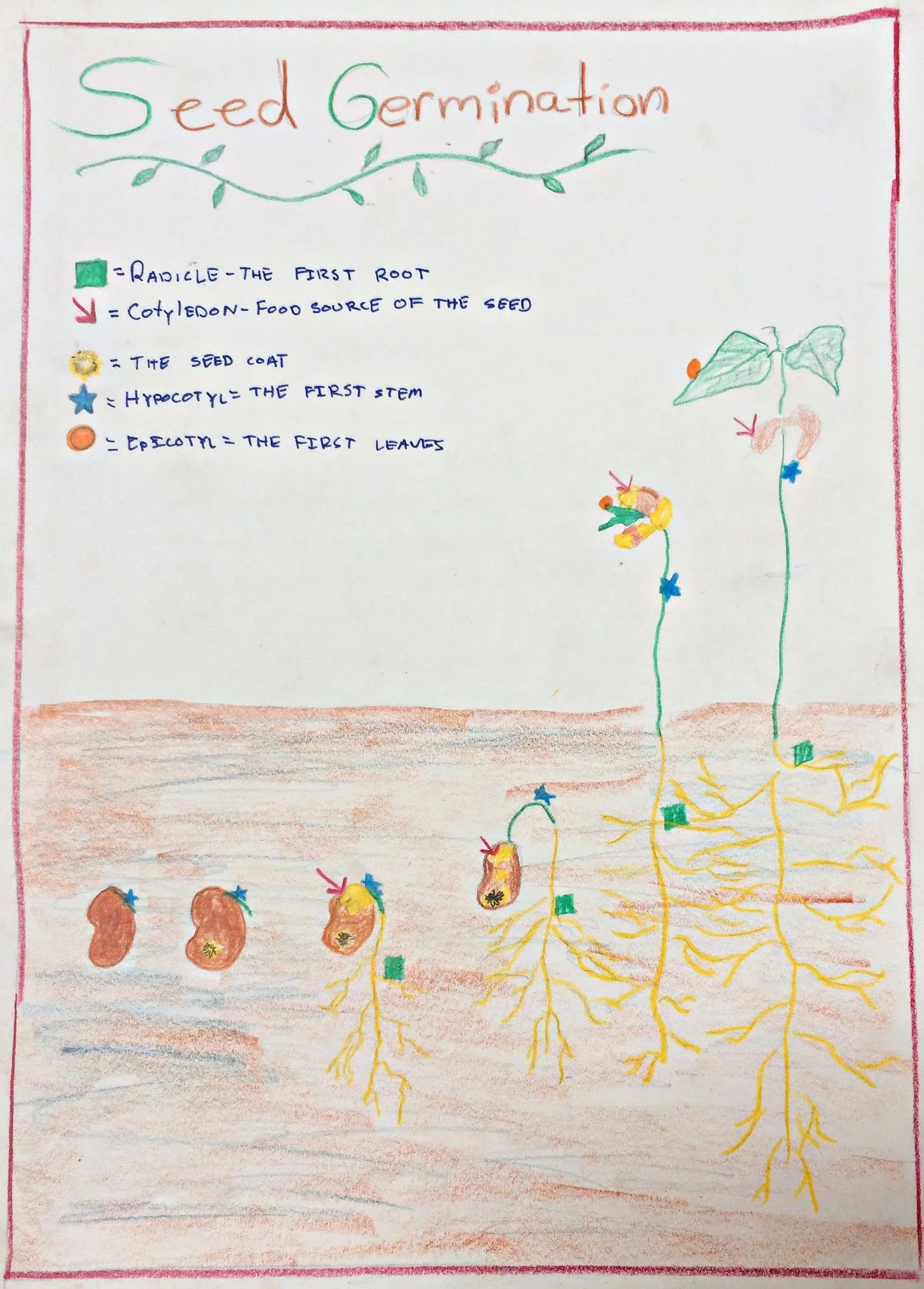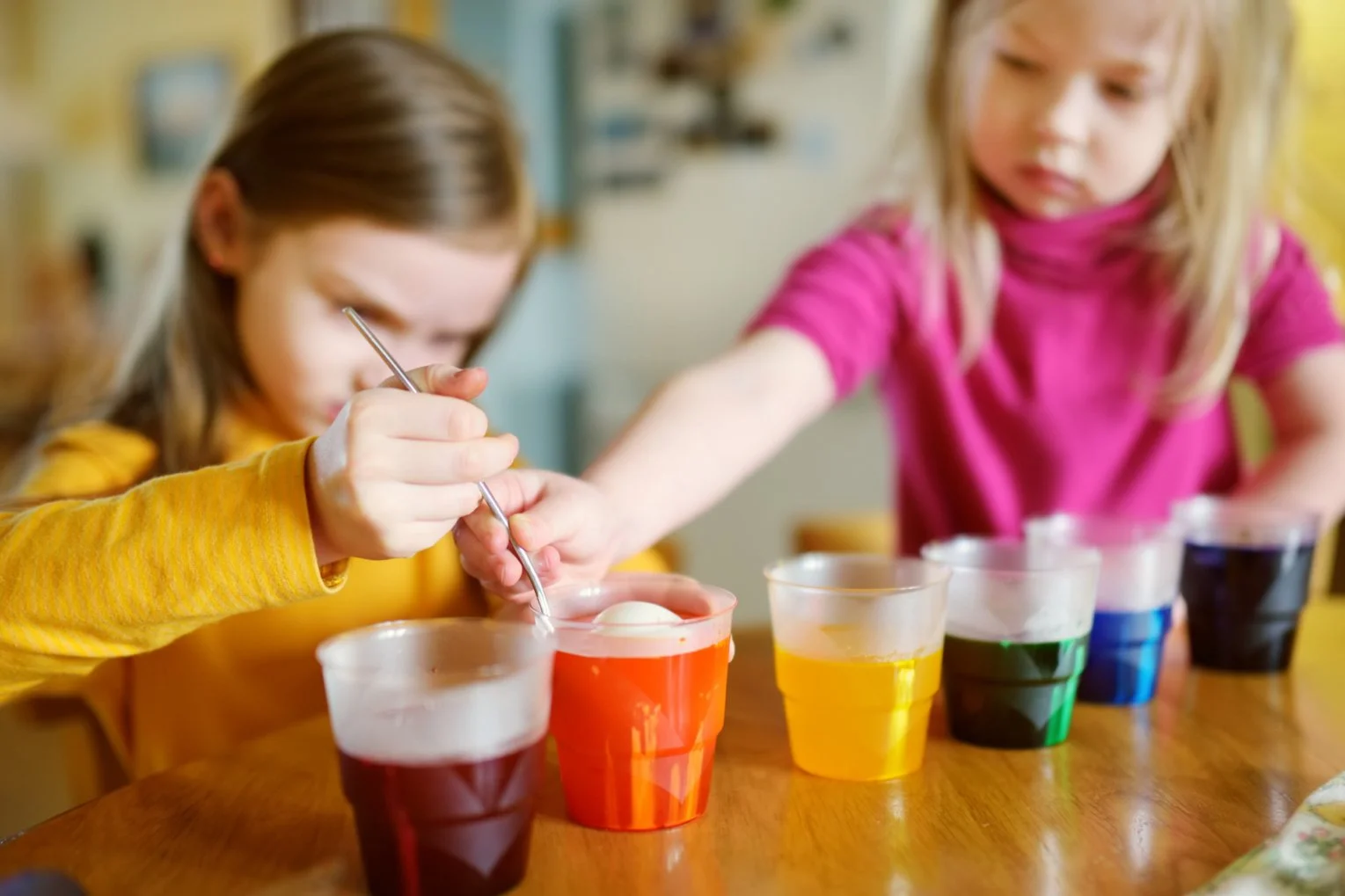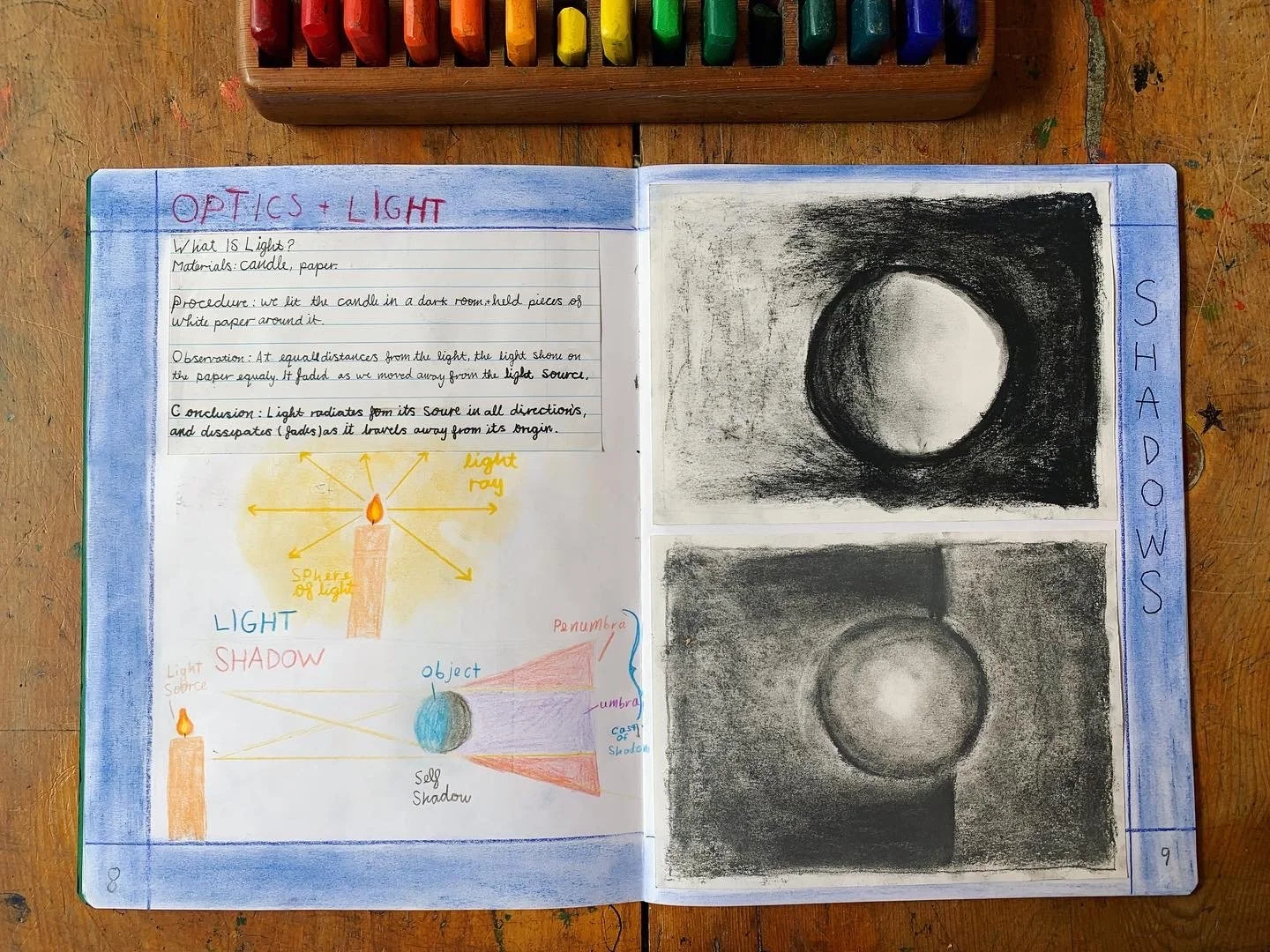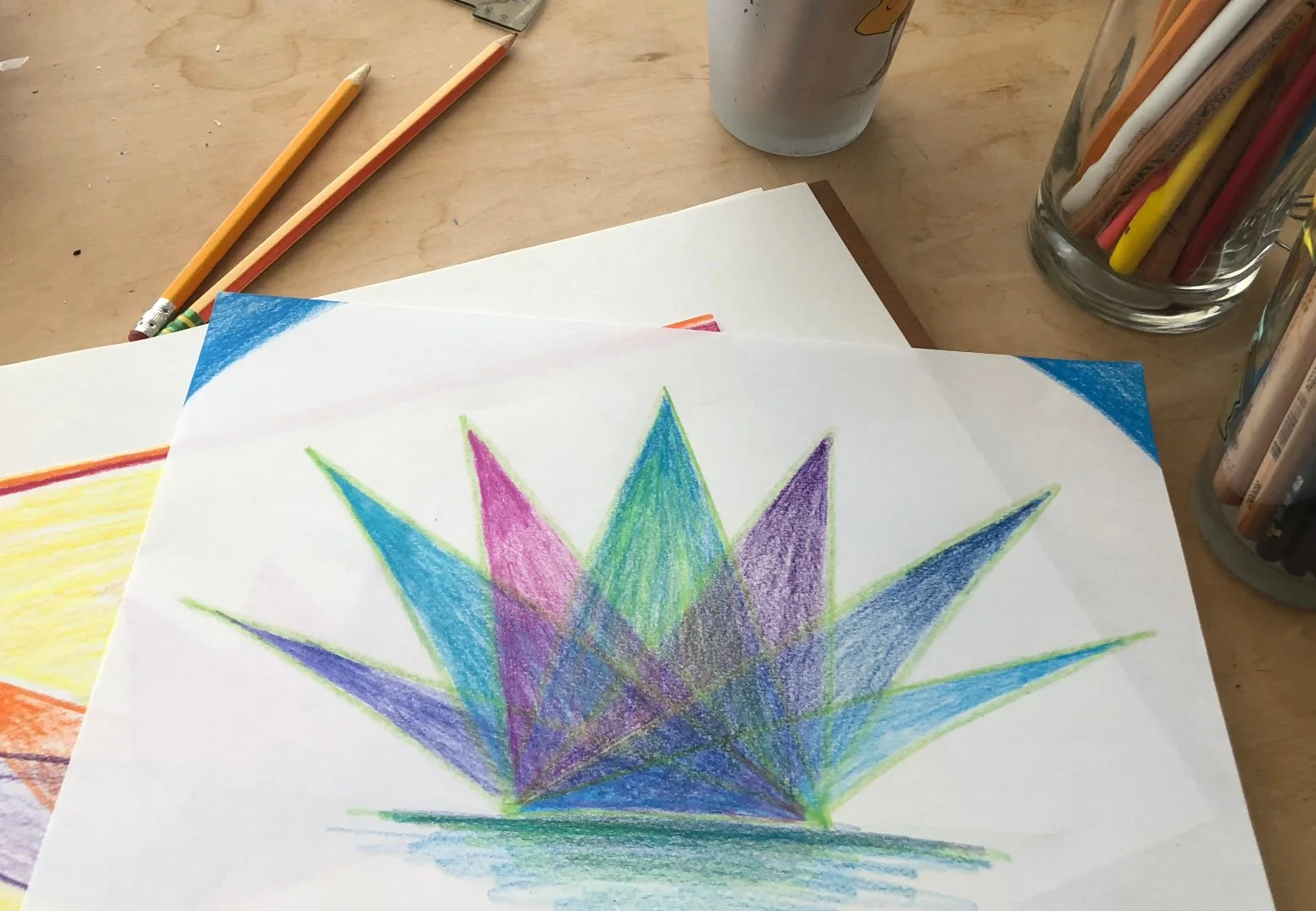
Waldorfish Blog
What are Waldorf Main Lesson Books Used For?
Q: In Waldorf education, main lesson books are used throughout the grades as part of a student’s educational experience: what are they used for?
(This post is part of a series in which we answer the most common questions we receive in our inbox re: homeschooling, Waldorf curriculum/pedagogy, and whatever else comes our way! Click here to read more from the series!)
A: It is common to hear that Waldorf students “make their own textbooks,” which are called main lesson books. But, this image of “textbook” isn’t quite accurate.
A first grader’s main lesson book page from mathematics- “David Divide” sharing equally!
A Waldorf main lesson book does not show what a student will learn, it shows what a student has learned. The main lesson book is a tangible representation of a student's developmental and artistic growth, serving as a unique account of their educational journey.
They are a living record of the child’s development– they show what they have experienced, mastered and enjoyed!
A main lesson book is slowly built over the course of a block*, one page at a time with the guidance of the educator. Students don't just write in main lesson books; they illustrate, draw, and craft visual representations of the concepts they are learning. They truly are a product of art and academics integrating as one!
*What is a block, exactly? Waldorf education is often organized into blocks, where one subject such as History, Language Arts or Math, is studied each day for about three to four weeks. This structure encourages the student to progressively build up their understanding and mastery of a single subject, and a chance to really focus on and explore the curriculum.
A seventh grader’s geometry main lesson book- notice the customized details!
In the early grades (1-4), main lesson books often emphasize foundational skills. For instance, in mathematics, students may start with the basic concepts of numbers and counting, with corresponding illustrations to reinforce understanding, such as “Prince Plus” to represent the process of addition. In language arts, students may draw letters and images inspired by classic fairy tales, enhancing both writing and artistic skills.
A student’s main lesson book page from the sixth grade Roman History block- a strong border is a wonderful way to frame the page!
As students progress through elementary school, the complexity of their main lesson book entries grows as well, and the students’ individuality is expressed more and more. Science lessons may involve detailed drawings of plant life cycles or experiments, while history lessons might include detailed timelines with illustrations depicting key events.
Here are some examples of main lesson book page ideas across the grades:
A first grader’s drawing of the four processes (multiplication, addition, subtraction, and division) as four little gnomes during a Math block
A fifth grader’s illustration of the stages of a sprouting seed during a Botany block
A seventh grader using a compass and straightedge to recreate Leonardo da Vinci’s “Vitruvian Man” in the Renaissance block
An eighth grader creating a chart to show their observations of different sugar products during their Organic Chemistry block
A fourth grader writing a paragraph about a cuttlefish, to demonstrate their newfound ability to use adjectives and adverbs.
Our own Caitlin Amajor’s fourth grade animal report main lesson book page!
The possibilities are endless when it comes to creating main lesson books - and Waldorf schools, Waldorf educators, at-home educators, homeschooling groups, etc. all have their own methods, standards and approaches to creating them!
Overall, there is no wrong way to create a main lesson book- they are, in the end, a method for the student to actively show their educational journey through artistic and academic expression.
About the Authors
Robyn Beaufoy is Waldorfish’s CEO, and also a course instructor for Simple Season (coming soon!), Waldorf Art for Beginners, and Weekly Art Foundations. You’ll find her intuitive touches and influences throughout everything Waldorfish offers. Robyn has been in the world of education for over 25 years, with an MA in Education and a certification in Waldorf teaching - she also homeschooled both of her children for some of that time. In 2012 Robyn co-founded Waldorfish.com, creating it with the vision of making Waldorf inspired-art and pedagogy more accessible, joyful, and doable for homeschoolers all over the world.
Caitlin Amajor is Waldorfish’s course instructor for Geometry grades 5 & 6, and Botany, as well as our Administrative Assistant. From a young age, Caitlin has been immersed in Waldorf education, attending a Waldorf school from K-8. After receiving a BA in History, Caitlin gained her certification in Waldorf teaching, and spent seven years as a Waldorf class teacher in the upper grades. With a special fondness for watercolor painting and geometry, Caitlin loves bringing Waldorf education to her students all over the world, and seeing their own individuality and style bloom from the curriculum!
Waldorf Fifth Grade Botany: Growing with the Child
A fifth grade child is in a very interesting and important part of their development.
(Exciting news! Our Botany course is now open for enrollment! Click here to learn more!)
Students in this grade aren’t yet middle schoolers, and they also don’t feel as if they belong in the same space as a younger child anymore.
A fifth grader still has a sense of childlike wonder and imagination, but they are also beginning to gain interest in the more “realistic” world around them.
An educator’s chalk drawing of a dandelion, which is often studied in the first Botany block of the year.
I remember seeing my fifth graders out at recess near the beginning of the school year. They loved to play; skipping, laughing, playing “kitchen” with leaves and pine cones, searching for fairies in the garden.
At the end of the year, it was different. The students played more sports, especially with the older grade students , talked together in more private spaces, and complained about being “bored” (which always made me smile a little, what a teenager-y thing to say!)
This transition is bittersweet, but it is an important one.
I’ve found these two images to be helpful when thinking about a fifth grade child:
In one sense, they are coming down from the sky; the moon, the sun, stars and clouds, and finding their footing on earth. They are finding where they stand, and will work on finding a solid, confident footing throughout their pre-adolescent and teenage years (and beyond).
From trees, to plants and flowers, the Botany curriculum is vast and varied.
In a very real sense, the fifth grader is growing up, as if they were a seed breaking through the ground and beginning to sprout. In their younger years, a student is in the warm, safe care of their surroundings; they are being held, their potential still contained. But in this transitional year, they begin to sprout, grow, and stand on their own.
So, where does the curriculum come into this? (You knew we were going to tie this into the curriculum!) Among other subjects, we have one of the most important subjects of the year: Botany.
How does a seed grow to meet its fullest potential? What must it rely on to develop and grow? What happens when its needs aren’t met? What is its purpose, and how does it contribute to the health and well being of others in this world? What does it give, what does it take?
It may be hard to believe at first glance, but the botany curriculum really does ask and answer many (if not all) of these big questions in a subtle, yet impactful way, and the material grows with the child in a meaningful and purposeful way.
Let’s start at the beginning…
Traditionally, there are two botany blocks in the fifth grade, one in the fall and one in the spring (though of course, this varies from place to place).
Growth and change- a continuous theme through the Waldorf Botany blocks!
The first block begins in a soft, slow fashion. It is magical, and has a feel of mystery and wonder to it. Imagine a forest in a fairytale; one might find bright lichens clinging to the side of a shady tree, soft mosses where the princess rests, and algae that paints the running river with bright greens and blues. The teacher uses poetry, stories, and asks the students to use their senses as they study these special plants and fungi.
As the fifth grader is still in a more childlike and imaginative place, this first block meets them perfectly where they are in their development. Lichens and mosses rely on others, such as a sturdy tree trunk, to thrive and grow; just as the fifth grader is still more comfortable in the safe embrace of their imaginations and guidance of others.
The second botany block, usually done a few months later, shifts significantly in how the curriculum is presented, and what it includes. Trees and flowers are the main subjects studied, but in far more scientific detail than before.
Trees are now categorized into monocots and dicots by observing their different structures and characteristics; flowers are celebrated for their beauty, and also dissected carefully to identify their many parts, such as the petals, stigma, pistil, and more. The plants studied in this second block are far more independent in how they function, and have many individual features that make them unique and special in the vast plant world.
Botany main lesson book pages are an opportunity for students to show their own style, and illustrate what they’ve learned!
This is the developing fifth grader: ready to exercise more independence, beginning to discover themselves as individuals, and ready to enter a more realistic world.
As with all things in Waldorf education, the botany curriculum plays an important role in mirroring the development of the child. From its beginning, the botany blocks grow with the child. Starting with the plants that need a little more support and care from others, such as lichen clinging to tree branches, and ending with the independent, strong, and unique flower.
Simple to complex, dependence to more freedom, soft and magical to more formed and realistic. It’s all about growing up, and supporting the children to bloom into their best, most colorful and dynamic selves (botany pun intended!)
About the Authors
Robyn Beaufoy is Waldorfish’s CEO, and a course instructor for two of our courses - Waldorf Art for Beginners and Weekly Art Foundations. You’ll find her intuitive touches and influences throughout everything Waldorfish offers! Robyn has been in the world of education for almost 30 years, with an MA in Education and a certification in Waldorf teaching - she also homeschooled both of her children. In 2012 Robyn co-founded Waldorfish.com, creating it with the vision of making Waldorf inspired-art and pedagogy more accessible, joyful, and doable to homeschoolers all over the world.
Caitlin Amajor is Waldorfish’s course instructor for Geometry grades 5 & 6, and Botany, as well as our Administrative Assistant. From a young age, Caitlin has been immersed in Waldorf education, attending a Waldorf school from K-8. After receiving a BA in History, Caitlin gained her certification in Waldorf teaching, and spent seven years as a Waldorf class teacher in the upper grades. With a special fondness for watercolor painting and geometry, Caitlin loves bringing Waldorf education to her students all over the world, and seeing their own individuality and style bloom from the curriculum!
more on the blog…
Looking for something?
Welcome to Waldorfish! We started this adventure in 2012 out of a desire to make Waldorf training more accessible to class teachers in remote locations and to homeschooling families everywhere! Read more, click here.
WE WON! Our Weekly Art courses were voted “best interactive art program.” Learn more about the award, here.
A few of our most popular blog posts:


